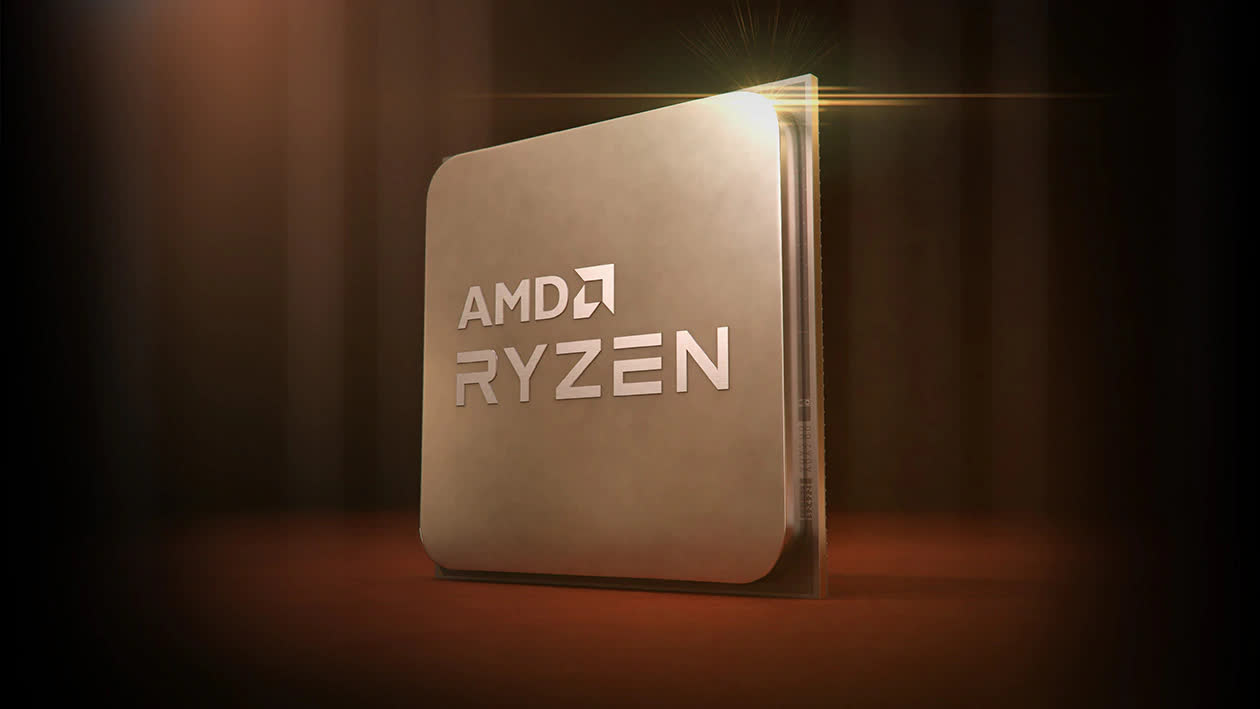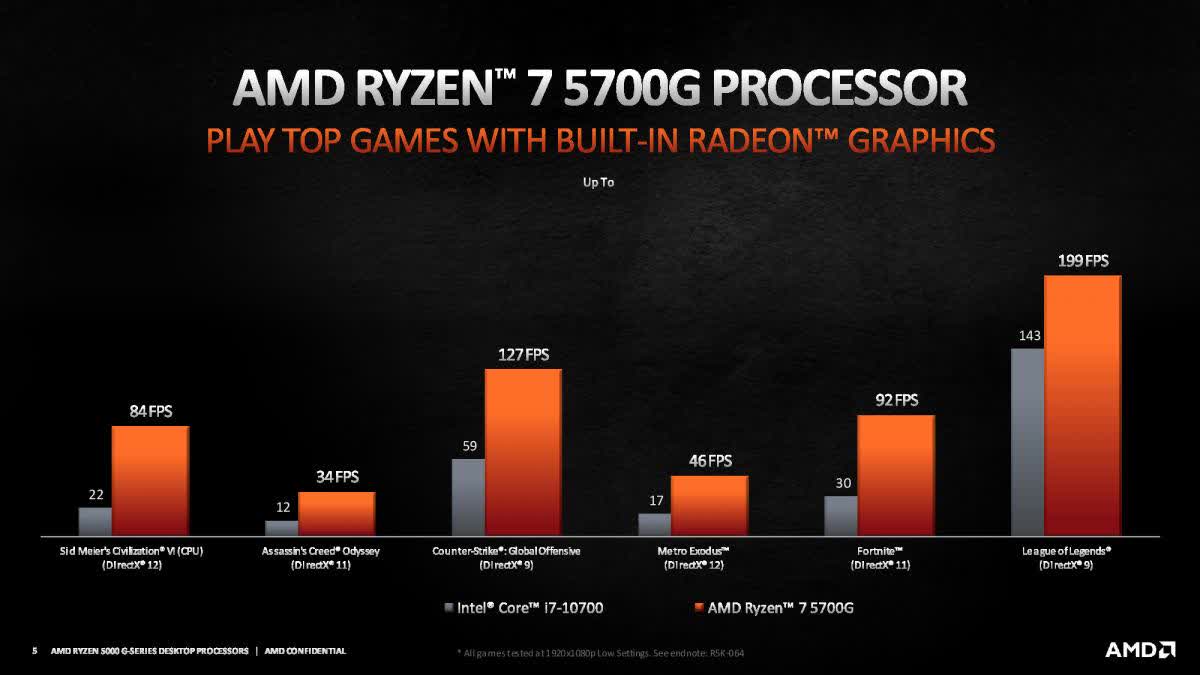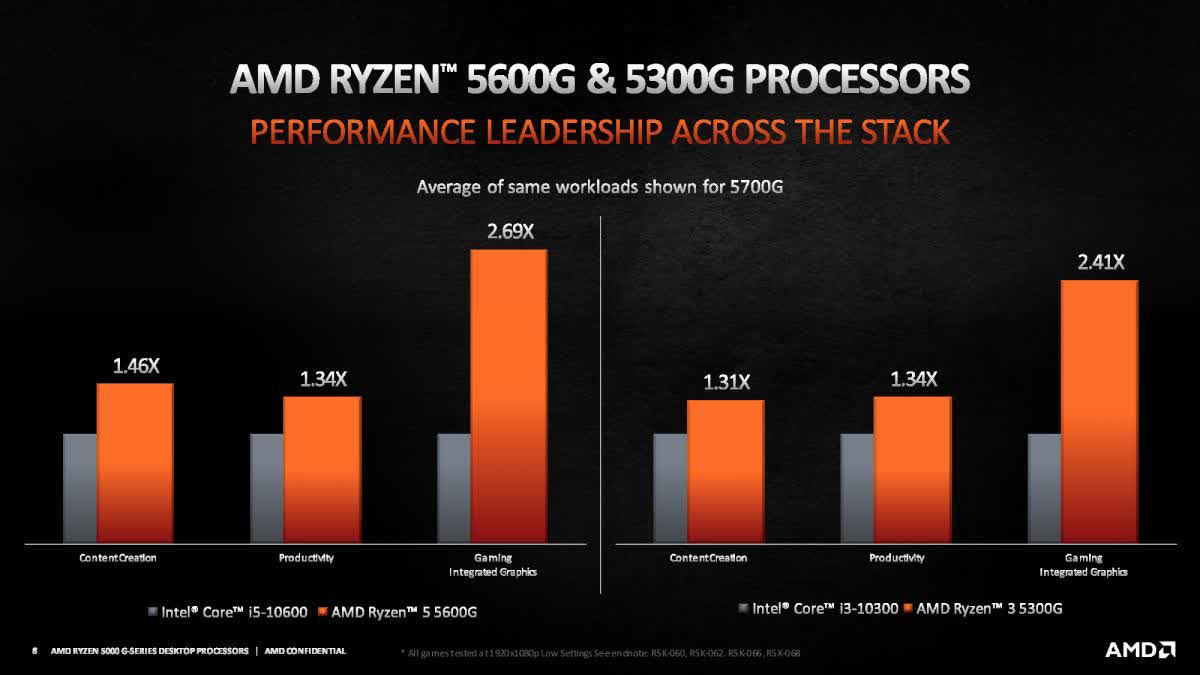What just happened? AMD has confirmed today that new Ryzen desktop APUs featuring Zen 3 cores and Vega integrated graphics are joining the fray. Ranging from 4 to 8 cores, clocked up to 4.6GHz, and available with 35W and 65W TDPs, AMD claims Ryzen 5000G APUs are considerably faster than 10th-gen Core equivalents, but wait, 11th-gen Rocket Lake-S are readily available with faster integrated graphics anyway.

Codenamed "Cezanne," the Ryzen 5000G series is divided into 65W and 35W (GE) variants. The Ryzen 5000G series comprises the 4C/8T 5300G/GE, the 6C/12T 5600G/GE, and the 8C/16T 5700G/GE. Based on the AM4 platform, all Ryzen 5000G processors support PCIe 3.0 interfaces and DDR4-3200 memory.
The iGPUs use the same architecture as their predecessors, but the 19% generational uplift from the Zen 3 cores brings a significant performance improvement in selected workloads, particularly single-threaded tasks.
Also read: 4 Years of Ryzen 5, CPU & GPU Scaling Benchmark
| Model | Cores/Threads | Base/Boost Clock | GPU Cores | GPU Frequency | TDP | Cache |
|---|---|---|---|---|---|---|
| Ryzen 7 5700G | 8/16 | 3.8/4.6 GHz | 8 | 2100 MHz | 65W | 20 MB |
| Ryzen 7 5700GE | 8/16 | 3.2/4.6 GHz | 8 | 2000 MHz | 35W | 20 MB |
| Ryzen 5 5600G | 6/12 | 3.9/4.4 GHz | 7 | 1900 MHz | 65W | 19 MB |
| Ryzen 5 5600GE | 6/12 | 3.4/4.4 GHz | 7 | 1900 MHz | 35W | 19 MB |
| Ryzen 3 5300G | 4/8 | 4.0/4.2 GHz | 6 | 1700 MHz | 65W | 10 MB |
| Ryzen 3 5300GE | 4/8 | 3.6/4.1 GHz | 6 | 1700 MHz | 35W | 10 MB |
Do note how AMD is comparing the Ryzen 5000G APUs with Intel 10th-gen Core series, instead of the recently released Rocket Lake-S processors, which feature much faster Xe-based integrated graphics.

The next generation of Ryzen desktop APUs is led by the Ryzen 7 5700G, which is on average 38% faster in content creation, 35% faster in productivity, and 80% faster in computing performance compared to the Intel Core i7-10700, according to AMD.

In gaming, the Ryzen 5700G also outperforms the Core i7-10700 primarily due to its superior iGPU. On average, it offers about 2.17x the gaming performance of the Comet Lake-S i7 processor. It'd be nice to see how Xe does in comparison.

The Ryzen 5 5600G and the Ryzen 3 5300G as expected perform very well in productivity tasks, as we've seen in our reviews (sans-graphics, of course) as they're essentially the same chips.
With shortages, the iGPU of the Ryzen 5000G series would be very welcome for the DIY PC market, but just like the previous G SKUs, they will only be available for OEMs initially. If you're thinking about getting one for a build, you'll have to buy a pre-built PC or wait longer for them to appear in the retail channel.
https://www.techspot.com/news/89295-got-gpu-ryzen-5000g-zen-3-apus-radeon.html